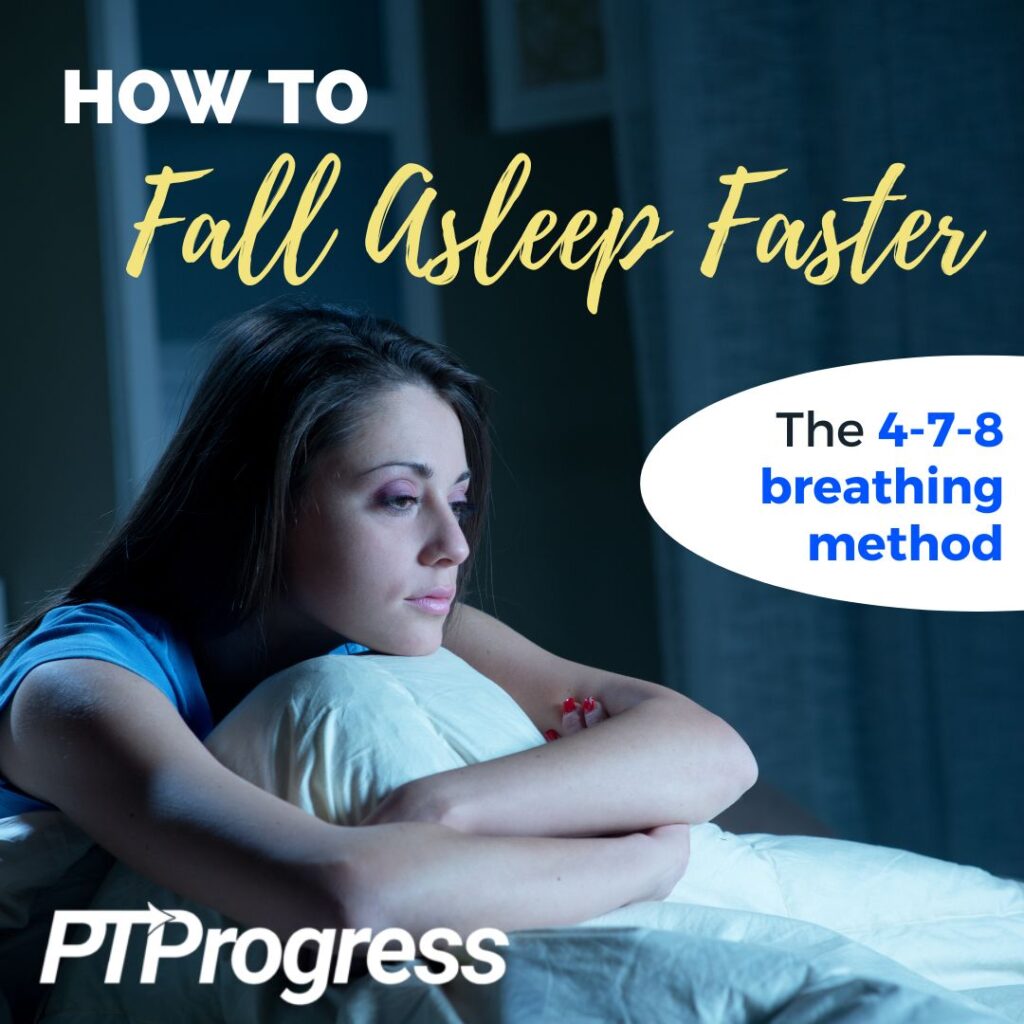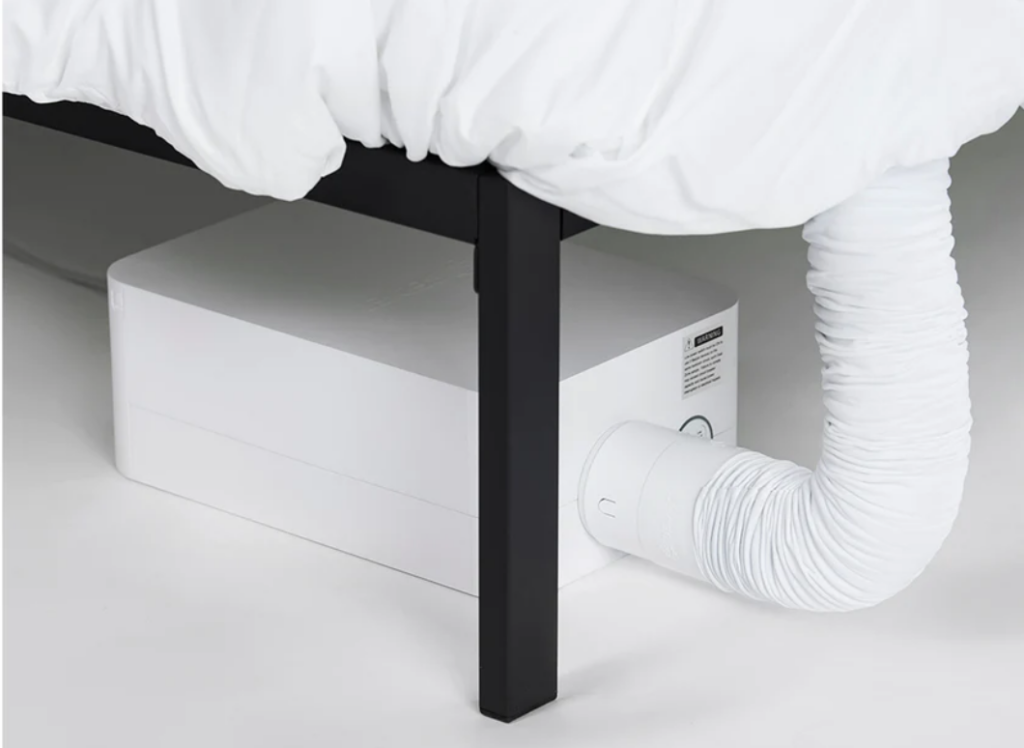
How long does it take you to fall asleep? Five minutes? Twenty minutes? An hour or more? The Sleep Foundation reports that a healthy sleep latency, or the amount of time it takes to fall asleep, is 15–20 minutes. If you lie in bed long past this period, keep reading to learn about the 4-7-8 breathing method—a breathing exercise that could help you relax and fall asleep fast.
How Sleep Affects Your Health
One in 3 American adults gets insufficient sleep, which the CDC defines as fewer than 7 hours per night. You could be getting even less if you spend the beginning of each night lying in bed, waiting for sleep to come.
Sleep affects all aspects of health. Your ability to recover from an injury, resist infection, perform athletically, and function cognitively are all jeopardized by insufficient sleep. And while a little bit of periodic sleep loss is normal, too much could make you more likely to develop chronic illness.
For example, people who don’t get enough sleep are more likely to develop type 2 diabetes, hypertension, stroke, or cardiovascular disease. Insufficient sleep has also been linked with obesity and depression—two major epidemics wreaking havoc on American wellbeing.
The good news is that a few lifestyle changes can help you fall asleep fast without the use of pharmaceuticals. And the first of these requires no expense and little effort: all you have to do is breathe!
Need to Fall Asleep Fast? Try the 4-7-8 Breathing Method
Also called the Relaxing Breath, the 4-7-8 breathing method is a kind of yogic practice meant to calm the nervous system and promote relaxation. Dr Andrew Weil, a practitioner and pioneer of integrative medicine, has promoted this breathing method since the 1980s. Here he is demonstrating the 4-7-8 breathing method.
How to do the 4-7-8 breathing method
To begin, place the tip of your tongue against the tissue behind your top front teeth. Try to keep your tongue there throughout the breathing cycle, and purse your lips if it’s more comfortable.
Start by exhaling all the air out in a loud whoosh. Then, perform the following steps:
- Inhale through the nose for a count of 4.
- Hold your breath for a count of 7.
- Exhale all the air out in a loud whoosh for a count of 8.
You’ve completed one breath. Dr Weil recommends practicing this breathing method twice a day, drawing 4 breaths each cycle.
So repeat steps 1-3 three more times to complete 4 breaths.
Importantly, you’ll notice in the video that Dr Weil does not count seconds; he simply counts in his head to 4, to 7, or to 8. So you don’t need to whip out a watch and hold your breath for 7 full seconds just yet. Simply run the numbers in your head and, with each cycle, see if you can slow down your counts until they are as slow as the clock ticking in your bedroom.
If you practice the 4-7-8 breathing method while sitting or standing, watch for lightheadedness. Once you’re accustomed to this practice, you can use it throughout the day whenever you need to calm down or clear your head.
Why It Works
Deep breathing techniques have been in circulation for decades, and research supports their use for treating insomnia. But Dr Weil’s Relaxing Breath is particularly effective for a couple unique reasons.
First, the numbers 4-7-8 are not arbitrary. In fact, it’s the ratio of inhale to exhale that makes this method work so well. An inhale/exhale ratio of 1:2 activates a parasympathetic response in your autonomic nervous system, the part of the body that manages anxiety and stress. By contrast, when you’re under a sympathetic activation, you feel more alert and tense, ready to respond to stressors with a fight or flight. Responding to this stress results in short, frequent breaths. But deep slow breaths, like those in the 4-7-8 method, help your brain switch gears to a parasympathetic response: all is well, and you can relax now.
What happens in between—the count of 7—is equally important for relaxation. Holding your breath may be uncomfortable at first, but it actually floods your arterial blood with oxygen, lowering your blood pressure. When performed over the long term, the 4-7-8 method has been shown to lower resting heart rate and blood pressure levels in healthy adults. So in addition to helping you relax and fall asleep faster, deep breathing can have a profound impact on your overall health!
6 Other Ways to Fall Asleep Faster
The 4-7-8 breathing method will be most effective at helping you fall asleep when it’s part of good “sleep hygiene.” This simply refers to the habits and choices you make throughout the day that affect your sleep. You can support good sleep hygiene by maintaining a healthy diet and regular exercise. Otherwise, if you’re still having trouble, consider the following tips.
1. Keep a Consistent Sleep Schedule
Try to go to bed at the same time every night, and keep your alarm set for the same time every morning—even on weekends and holidays.
The body loves consistency. Follow a steady sleep schedule, and before long you might not even need an alarm to wake up each morning. A regular rhythm can also help cue your brain to slow down and get ready for sleep—especially if it happens at the same time every night.
2. Decrease Screen Time as Bedtime Approaches
You’ve heard it everywhere, but it’s true: our electronics are keeping us up at night. That’s because their little screens emit blue light, or short-wavelength enriched light, which suppresses the production of melatonin. Essentially, that bright blue screen is sending your brain mixed signals, stimulating it into wakefulness when the rest of your body is trying to wind down.
Best practice is to restrict your use of electronics at least 30 minutes before bed. If you need to use your phone—to set an alarm, say—make sure the screen has an amber filter to mitigate the blue light effect. Many phones today come with an amber “nighttime mode” built in; otherwise, an app like f.lux can program your phone to naturally dim its lights at a certain time.
3. Avoid Caffeine and Alcohol
As a stimulant, caffeine is the last thing you want to intake before bed. But avoiding it isn’t always easy, especially since it’s in coffee, soft drinks, tea, and chocolate. If you are particularly sensitive to caffeine, try to abstain as early as 3pm, and switch to decaffeinated beverages for dinner.
But just because a beverage is decaffeinated doesn’t mean it’s good for sleep. For instance, alcohol is a depressant and may make you feel sleepy, but drinking it before bed can disrupt your sleep later on. For that reason, avoid drinking alcohol less than 4 hours before bedtime.
If you need a nightcap, choose a small glass of warm milk or herbal tea. Too many fluids will keep you going to the bathroom anyway.
4. Get Comfy
It’s possible you’re not sleeping well simply because you’re uncomfortable. An unsupportive pillow or an old mattress, even if you’re used to them, could be causing pain and discomfort that wakes you up in the middle of the night or makes you toss and turn.
But before you replace your mattress, consider upgrading to a better pillow or mattress topper. A plush mattress topper and supportive pillow can help you get comfortable, reduce back and neck pain, and sleep better without having to pay for a new mattress.
Finally, a weighted blanket may help you sleep longer and sooner. Its extra weight (5 to 35 pounds in sand or microbeads) provides sensory compression that can help tamp down anxiety and make you feel calm under the covers.
5. Desensitize your Room
An ideal sleep environment is quiet as well as cozy. But noisy neighbors, a busy street, or snoring sleepers can interfere with that environment and keep you awake. Block out their noise by wearing earplugs or drown it out with a noise machine. Most noise machines offer a variety of frequencies to choose from, including ocean waves or steady rain.
If instead you’re distracted by an ornery streetlight or the light show of passing cars, set up blackout curtains over your windows. You can also slip on an eye mask—a desensitizing sleep accessory to also bring on your travels.
6. Cool Down
Did you know that your body temperature naturally cools off in the evening? This dip in core temperature helps signal the body to prepare for sleep.
But that natural signal can be disrupted and even reversed by a rise in body temperature from night sweats, hot flashes, or a too-warm environment. Try turning down the thermostat when you get ready for bed, or use a fan at night—it’ll double as a noise machine.
For ultimate temperature regulation, consider a cooling machine. This device hooks up to your mattress and uses air circulation to regulate your temperature in bed. The one from BedJet features a “biorhythm function” that cools the mattress at the same rate as your body’s core temperature to reinforce sleep cycles. It can also warm the mattress and help you come out of sleep naturally and effortlessly.
These machines are expensive, but if sweating is keeping you from a restful night sleep, then the climate control may be worth it.
How to Fall Asleep Fast: Summary
Sleep disruption can throw a huge wrench in your health. But even small changes—like the 4-7-8 breathing method—can help you fall asleep faster and longer. The tips in this article just scratch the surface of all the ways you can use a research-based, non-pharmacological approach to sleeping better and sooner every night.


